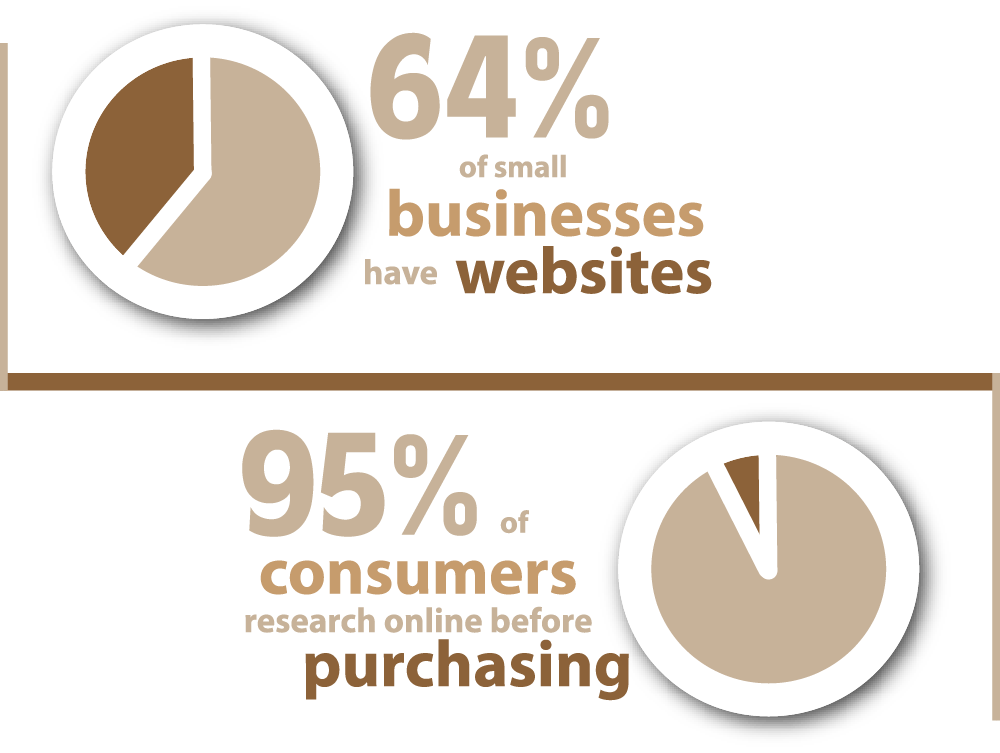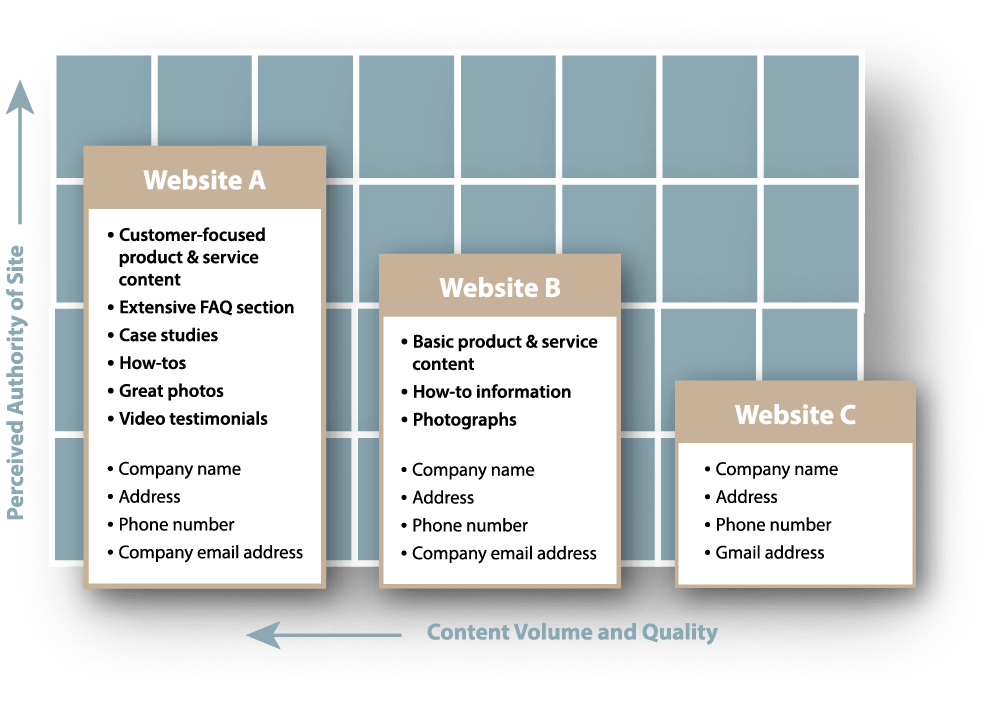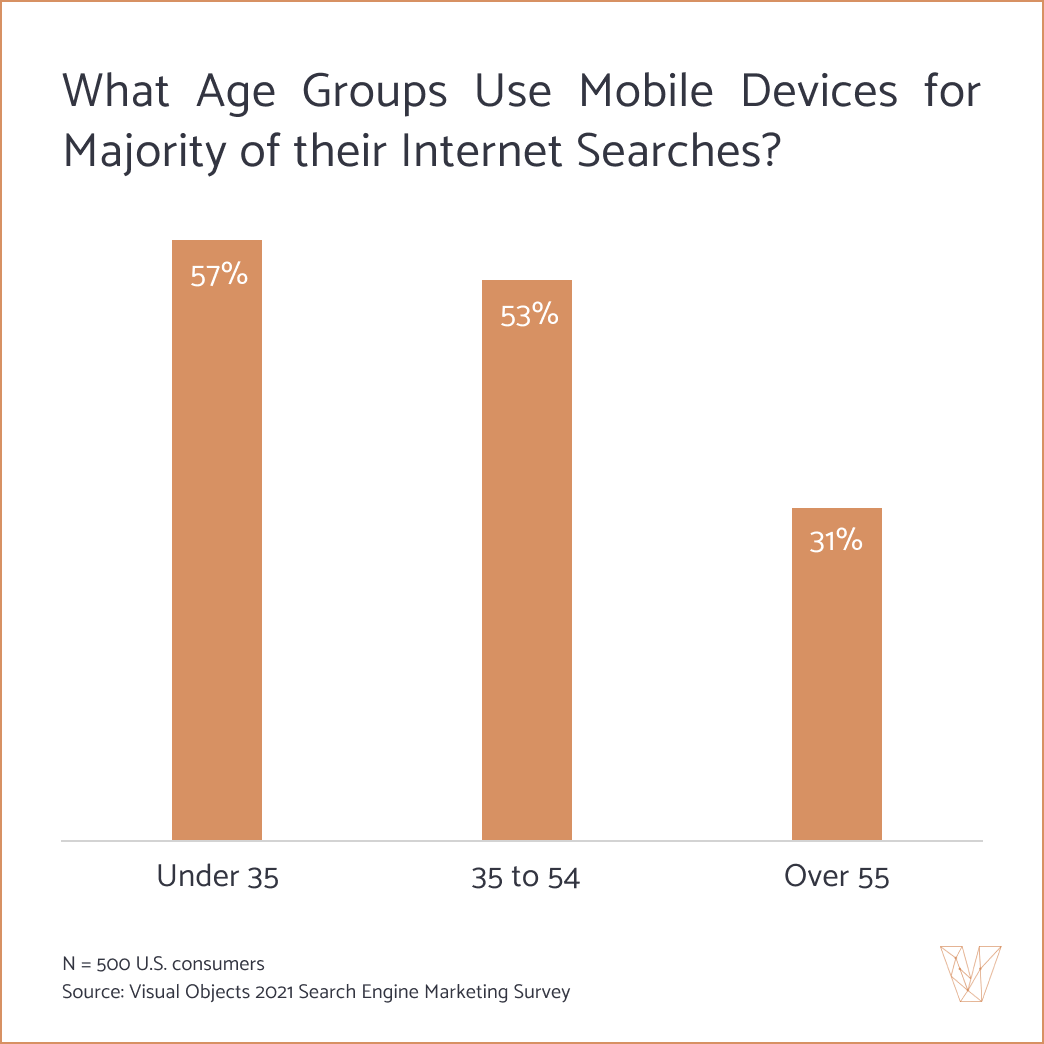10 reasons your company needs a website
It’s 2022 and a website is critical to business success
If you have a business, you need a website. It is a must-have for growth, customer service and support, marketing, and sales. As a business consultant for more than 20 years, I have heard many reasons why companies do not need a website. Fifteen years ago…maybe.
Today, I wholeheartedly advise every business to have a website.
Times change. Markets become more competitive over time, not less, and the business you think you can safely turn away today will likely not come looking for you later. Consumers latch onto the most convenient sources for products and services. If you are 90% harder to find, what would the outcome be?
Many businesses do not have a website. Don’t be one of them!
Many will scoff at the idea that there exist businesses today that don’t have a website and don’t believe they need one. They are out there! And there are a lot more of them than you’d expect. I was shocked to find that about 20% of members of my local Chamber of Commerce do not have websites. And don’t want one. Great people. Bad ideas.
In 2022, less than 64% of small businesses had a website. While that number has stayed the same for a decade, consumer Internet use has exploded. Today, depending on the product or service, between 70% and 95% of consumers research companies online before buying.

10 reasons your business needs a website!
1. Up to 95% of consumers shop online before calling a service company or purchasing a product
This is at the top of the list for obvious reasons. You may not be online, but your customers are. When buyers look online for a place to spend their money, they will make their selection based on what they find on a company website.
Modern business speaks the language of the Internet. If you do not, then people who need your services will seek out someone who does. Consumer vocabulary consists of dot-com and URL and shop online. To be competitive, you have to be fluent.
2. A website expands your business hours to 24/7/365 without adding staff.
One of the best things about a website is that it’s available to new and existing customers 24/7/365. If your business closes at 5 PM and you are home in bed, your website is still working for you. Questions will be answered, orders placed, and appointments set, all while you and your employees are off the clock.
More content equals greater perceived competence and expertise.
After-hours information sharing is why content is the driving force of web marketing. Everything from product descriptions to case studies to the lowly (but extremely useful) FAQ section combine to serve as a passive marketing team when you’re not there.
Remember, visitors to your website are not experts in your field. You are! Show them what you know.
Frequently asked questions content is grossly underrated as a marketing tool. It is too often an afterthought in web development. FAQs should be seen as something other than perfunctory must-haves that end up sketchy and inadequate. Good FAQ content is a content rock star that can sell products and bring in business, particularly during off-hours.
Understand your customers
Nothing tells prospective customers that you understand them more than predicting their concerns and questions and dealing with them immediately. If your website answers enough questions typical prospective customers might ask, you can convert the sale without actually talking to the prospect.
It’s only a short step from “wow, this website was so helpful” to “I am going to buy from them!”
It’s not only after-hours contacts that are affected by a strong web presence. Many people do not like to call businesses. Many people would rather browse the website and find answers on their own than call on the phone.
3. Your competitors have a website.
If your competitors have a website (and they probably do) and you do not, you are invisible to a sizable chunk of the market actively looking for you! It doesn’t matter how good you are if no one can find you. For all practical purposes, your company doesn’t exist to new customers.
Just having a website might not be enough. When a consumer finds three websites that sell a needed product or service, it comes down to a comparison. Let’s say there are three websites:
-
- Website A has well-planned, customer-focused content with an extensive FAQ section, case studies, how-tos, great photos, and video testimonials that answer questions most often asked by customers.
- Website B features basic content on products and services but has a good amount of how-to information and pictures.
- Website C has the company name, address, phone number, and Gmail email address.

Who are you going to pick? Who seems most trustworthy? Who answers all the questions and makes shopping convenient? In this case, it’s obvious.
Before you ask, price is not as big a factor as you might think in the buyer decision-making process. People will pay more for better service and expertise.
4. Businesses without websites are perceived as unreliable or suspect
56% of consumers say they do not trust a business without a website! Companies might come off as a fly-by-night or out of touch with the marketplace. To some business owners, not participating in what is a standard business practice might be a way of staying “old school.” But many potential buyers might assume the company is not up to speed with current trends in the industry.
More scary statistics
-
- 81% of consumers think less of a company or brand if its website is outdated. It doesn’t take a lot of effort to keep your website current. People notice.
- 39% will think twice about using a company if its website is not current. A big chunk of those who notice will not buy from you. Imagine one-third of potential customers driving into the parking lot, looking at your building, and leaving without even getting out of the car!
- 50% of people who conduct a local search on their smartphones and 34% of those using computers or tablets visit the physical store within a day. That goes to show you that mobile-friendly sites are mandatory. It also highlights that people shopping online are highly likely to buy.
5. 70% of consumers shop online after hours
The “classic” Internet Rush Hour is from 7 PM to 9 PM in every time zone. Evenings are when most people unwind. They had dinner, put the kids to bed, and walked the dogs. So, it’s the perfect time to browse online before heading to bed.
But even that concept is changing. Over the past few years, particularly since COVID, online activity has extended well into the early morning hours. It’s not uncommon for eCommerce sites to see steady traffic until 3 AM or even 4 AM.
An average of 70% of consumers shop online after hours, women slightly more than men. Since your website never closes, you are ready for these sleepless people who want to spend money! 24/7/365 service is easy with a website and costs you nothing in terms of staff time.
6. E-commerce allows sales outside of time and geographic boundaries
Time is not the only barrier defeated by the Internet. Geographic location is less critical in today’s marketplace than in the days before overnight shipping. If you are selling wholesale or retail and don’t have a website, you could miss out on a ton of business from outside your home area.
As we’ve seen, customers buy any time of day or night. Overnight purchases don’t require any work on your part. Payments are processed automatically. The next day, you simply have to package and ship the goods. The only difference between a local customer and one two states over is how far the box containing the item travels.
Selling on eBay, OfferUp, Facebook Marketplace, or the retail features of other social media platforms are terrific ways to sell. But with your own website, you aren’t competing on the same page with others selling similar products. You can control the look and feel of your site. Best of all, no middleman is taking a cut of your sale!
Depending on your traffic, you can quickly recoup the cost of an eCommerce site, even if you paid a professional to build it in Shopify or a plug-in platform like WooCommerce. A typical smaller business online store is easy to set up. Though some eCommerce strategies can be sophisticated, it requires only basic skills to manage a simple Shopify site.
7. 70% of participants preferred to book their appointments online
Consumers love setting appointments online. Across all industries, about half of all appointments are booked online by the customer. Since two-thirds of consumers say they prefer companies that let them set their own appointments online, it’s wise to make that happen! Online booking reduces the number of incoming phone calls so that staff can focus on other parts of their jobs.
There are many online scheduling platforms on the market. Some are web-based SaaS programs, while others are plug-ins added to a website’s back end. All are easy to use, and most are quick to set up. If you have a business account with Google Workspace, the calendar product has a module you can install on a website. It is not available for personal Google accounts. Calendly is probably the best-known online calendar program. It’s not the oldest name in calendar services, but it’s ubiquitous after several years of explosive growth. I use the freebie version on my website for first-time consultations.
Make more money.
Many studies have studied how online appointments affect the bottom line. The average of these studies indicates that online appointment-setting raises revenue by about 65%! That’s an incredible jump, but that figure is born out, more or less, across industries and regions.
Okay, so if that potential big bump in revenue didn’t convince you, how about this?
8. 56% of customers go online after work to schedule appointments
Companies with online booking applications find that 50-60% of those bookings are entered between 5 PM and 6 PM when potential clients are on their way home after work. (Hopefully, they are doing this at stoplights and not in traffic!)
Many of us see the commute between the busy work day and the hectic early evening at home as an opportunity to take care of “must-do” business. Hair, beauty, and spa appointments, scheduling auto services (such as oil change shops, tire stores, and auto detailing), and medical appointments are favorites. Remember that your staff is also driving home doing the same thing at this time, so who is there to answer the calls for an appointment?
Your website!
9. Intent to buy local
People are much more likely to search for “discount hamster food in Tampa” than just “discount hamster food.” Nearly half of consumers (44%) say they frequently search for information about businesses and services in a specific location. For example, a consumer is likely to look up a restaurant’s menu before deciding to eat there or find store hours before going to the grocery store.
Knowing locals look to buy locally highlights the value of Search Engine Optimization (SEO) that focuses in part on regional keywords. As I said previously, if you cannot be seen, you don’t exist to new customers.
10. Age preferences
While crusty “old-timers” might be the holdouts when it comes to launching a website, they are not so tech-unfriendly when it comes to visiting one. According to research by Google, 86% of seniors in the United States spend six or more hours online daily.
Younger consumers are more likely to search for information on mobile devices than older generations:

-
- 57% of people under age thirty-five say that at least half of their internet searches are from a mobile device compared to
- 53% of consumers ages 35–54 and
- only 31% of consumers over age 55.
Because younger consumers are more likely to use their phones for quick, on-the-go searches, businesses that target a younger audience have the most to gain from a solid local SEO presence.
The obvious conclusion: your business needs a website
The conclusion to draw from this is obvious. Your business needs a website to compete in today’s marketplace. Survey and research data clearly show that a vast majority of consumers use the web for some part of their purchasing process. It follows that not having a web presence means missed business, lost revenue, and lower perceived credibility in the market.
Build and they will come
The nice thing about websites is that you don’t have to do everything at once. Unlike a printed catalog or billboard, changing a web page is not expensive. You can test ideas on the cheap to see what works best.
The most important takeaway is that a website is not an unnecessary extra or business nice-to-have feature. Websites are central to consumers’ shopping, so companies have to play the same game. In the long run, tech-unfriendly businesses will be excluded from the playing field simply because they will be invisible to the players.
Remember, content is king. More information is better than less. Have a plan when you start your website for how you will add more content over time. Start small. Make incremental additions. Show off your expertise!
At least start with building something. But, by all means, build.
Bibliography
https://visualobjects.com/digital-marketing/blog/benefits-of-local-seo
https://cebcreative.co.uk/business-without-a-website/
https://iotcommunication.com.vn/news/what-are-the-peak-times-for-online-shopping-.html
https://retail-focus.co.uk/sleepy-online-shopping/
https://www.gomarketbox.com/blog/how-online-appointment-booking-helps-boost-sales
https://wpforms.com/the-ultimate-list-of-online-business-statistics/
More stats you can reference
https://wpforms.com/the-ultimate-list-of-online-business-statistics/

About the author
Richard Williamson has enjoyed a three decade career in marketing, advertising, and public relations. Formally trained in graphic design and copywriting, he is a partner here at BackBurner Marketing and founder and lead designer of the Logo Design Group. Find out more about him here or at www.RichardWroteThis.com.
Richard is available for brand and marketing consulting, business coaching, and as a fractional Chief Marketing Officer.

